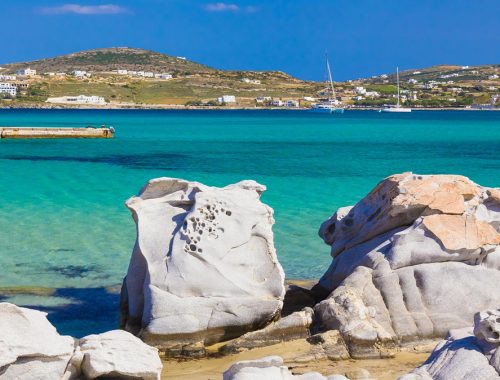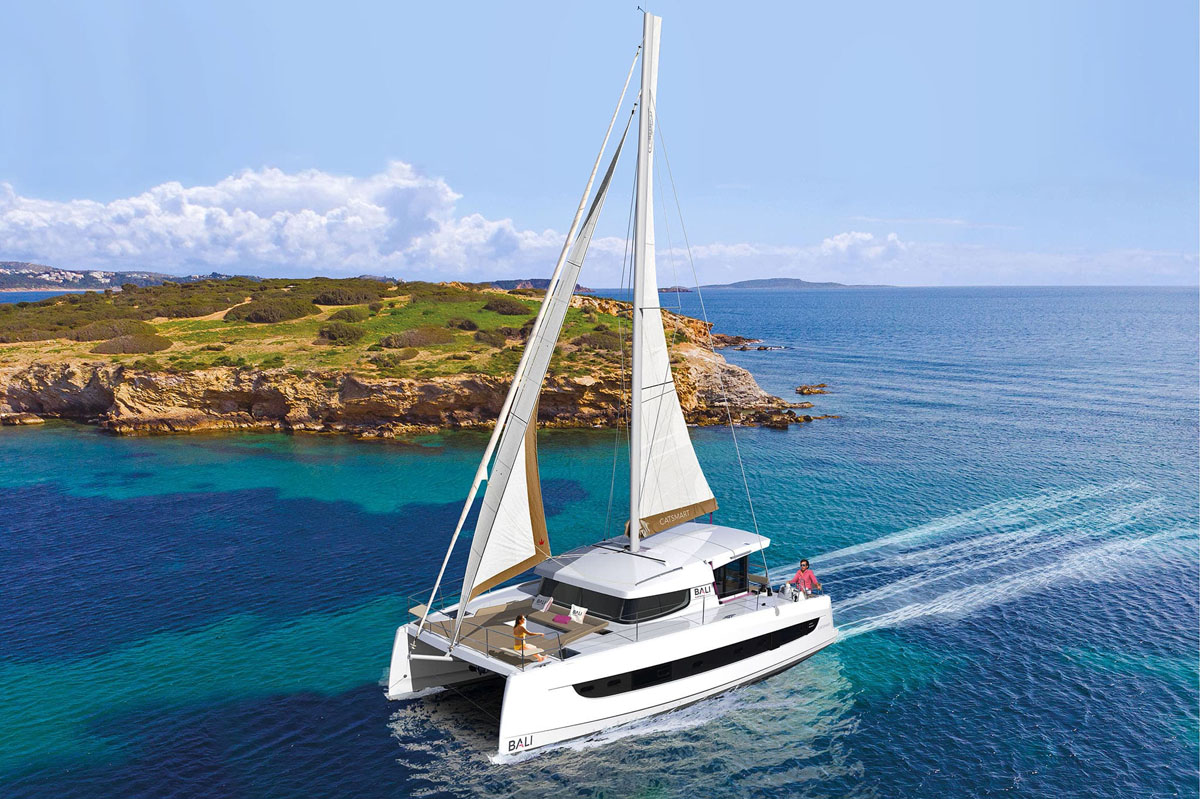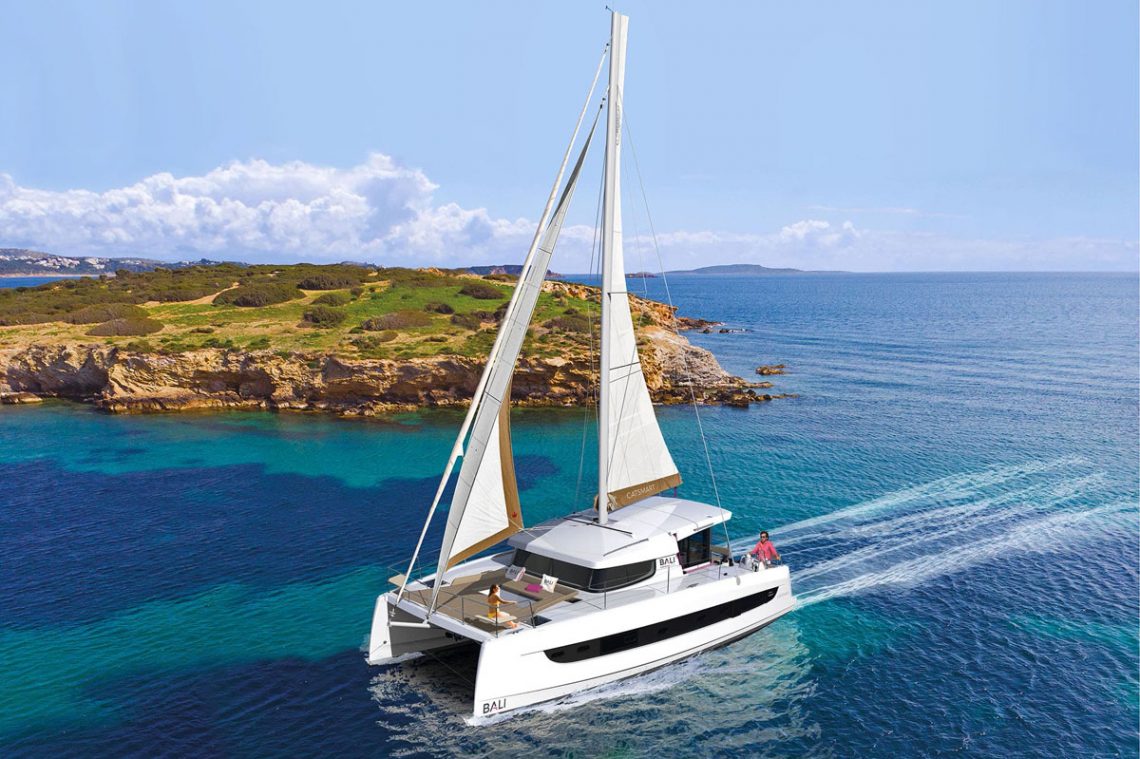
Sailing a catamaran on a cruise: doubts, truths, and myths
Lately, an increasing number of people are interested in renting a catamaran for their sailing trips. However, many prefer to sail it themselves without the assistance of a professional skipper. The natural question arises: will they be able to handle such a large boat?
Let’s explore some thoughts and tips for those approaching this experience for the first time.
Discover the best boat rental deals

Features of cruising catamarans
Catamarans are significantly wider than monohulls. A traditional sailboat may feel narrow and easy to handle, whereas a catamaran, thanks to its width, offers greater stability but can feel bulkier, especially in a marina. It’s important to know, however, that catamarans available for bareboat rental are usually smaller models, between 40 and 46 feet. Rarely will you find a catamaran over 46 feet available without a skipper, which is a sensible choice for beginners.
Secondly, entering and maneuvering in a marina with a catamaran can be intimidating for those with little experience. Space seems tighter, and every maneuver appears more complicated due to the size of the boat. Since handling a catamaran in port can be challenging, it’s important to plan every move carefully, consider the boat’s dimensions, and practice maneuvers in tight spaces.
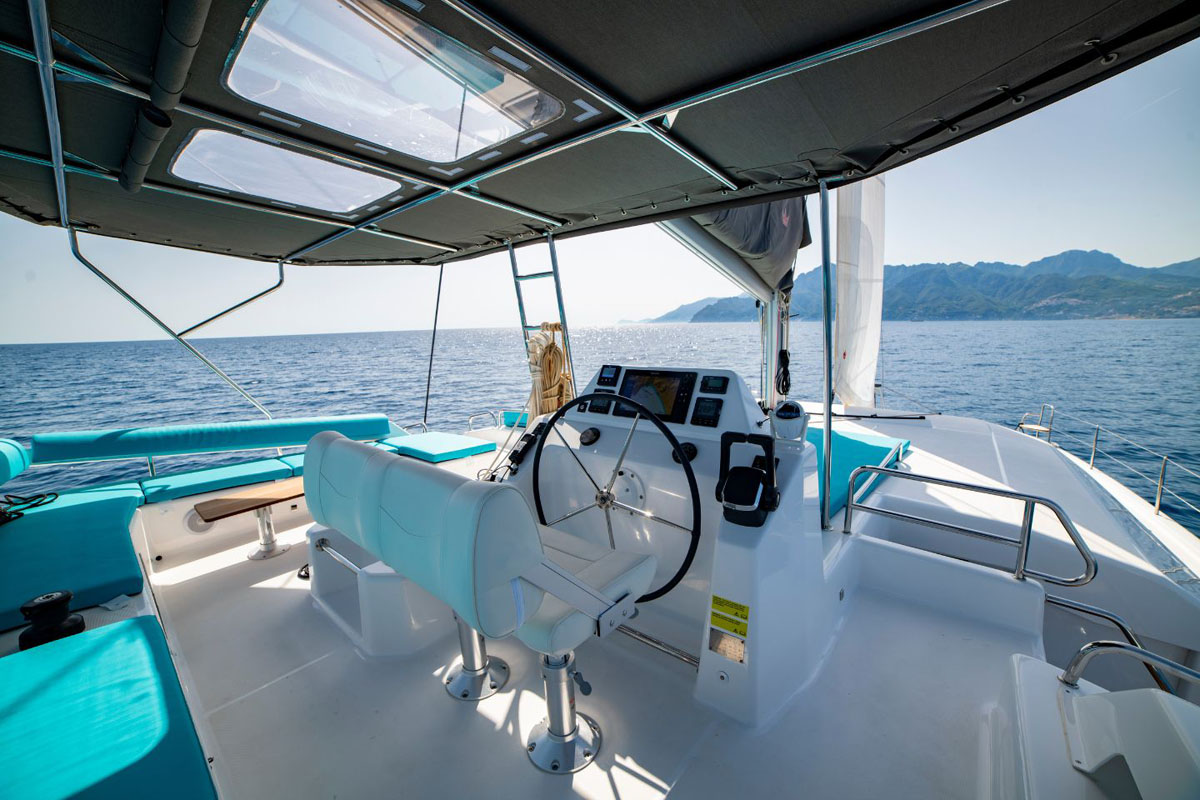
Which catamaran to choose: with or without a flybridge
If you don’t have much experience sailing catamarans, it’s advisable to rent a multihull with a raised helm station (sometimes called a “mezzanine helm”). This is located on an elevated level on one side of the boat, unlike a flybridge helm, which is positioned centrally on an upper platform. One of the main advantages of a mezzanine helm is the excellent visibility: the person at the helm has a clear view forward and, by slightly tilting their head, can also see aft. This is crucial during maneuvers.
With a mezzanine helm, it’s also easier to judge the distance between the boat and the dock during stern mooring, unless your flybridge helm is equipped with a rearview camera.
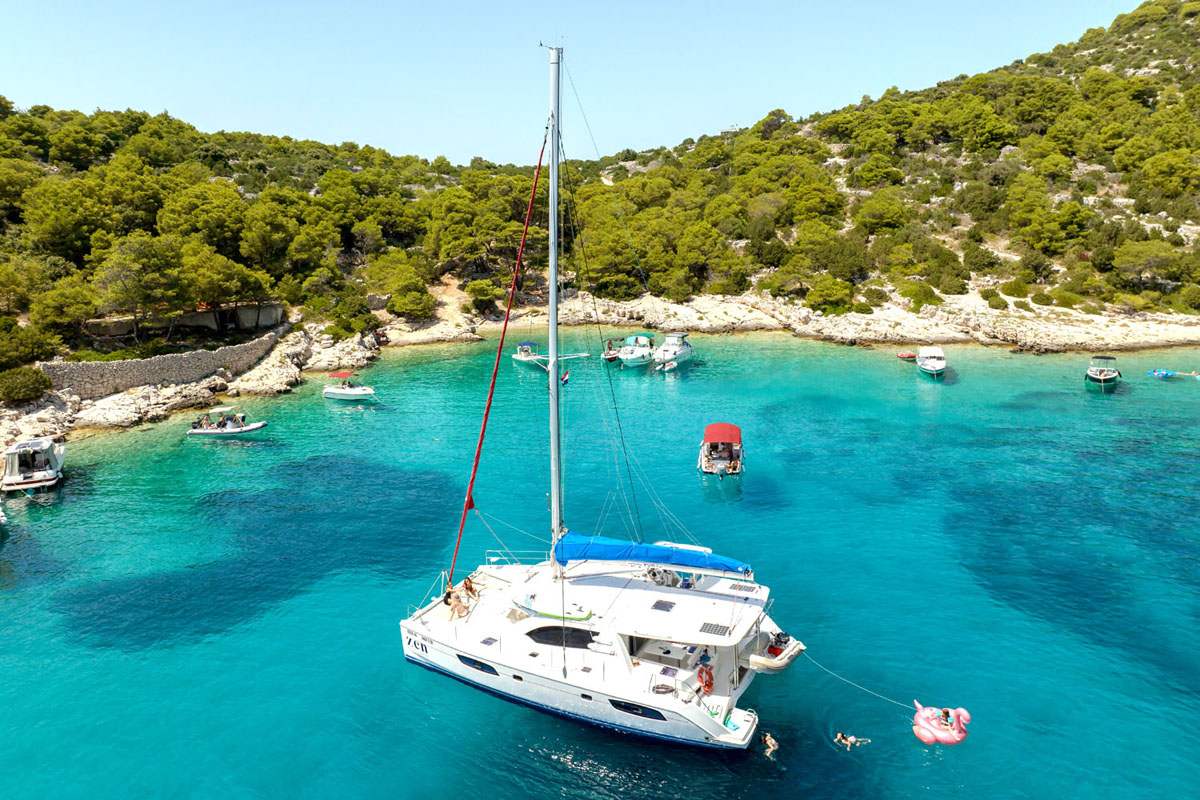
How to maneuver with two engines
A significant advantage of catamarans is the presence of two engines, with propellers positioned far apart. These engines are located at the aft end of each hull, almost at the extremities, and are generally equipped with S-Drive transmission. The S-Drive system features a vertical leg that extends from the engine through the hull to the propeller. This setup maximizes engine thrust, as the propeller’s force aligns with the boat’s axis, minimizing downward dispersion.
The widely spaced propellers create a strong leverage effect, allowing precise control of the boat. Using both engines is similar to driving a tracked vehicle: by moving one engine forward and the other in reverse with the same force, the boat can rotate on its own axis. After a few maneuvers, you’ll get used to using both engines, and everything will become easier. By the end of your trip, you may even attempt more complex maneuvers.
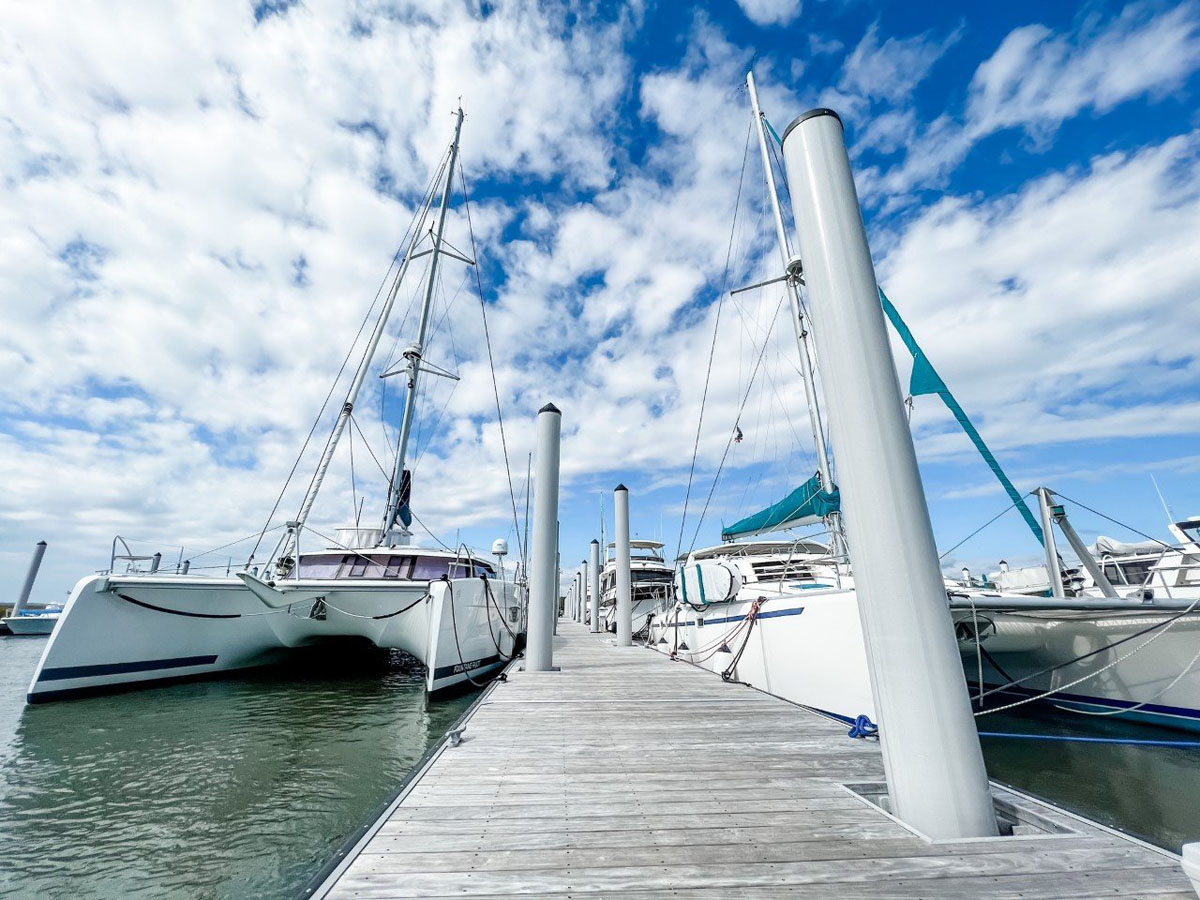
Mooring precautions: crosswinds and drift
One of the trickiest moments in handling a catamaran is mooring. During this phase, two factors are crucial: the catamaran’s size and its helm type. While controlling a catamaran is generally easier than a monohull during mooring, it’s important to remember that the catamaran’s exposed surface area is large, while the submerged area is small. This means that in strong crosswinds, the catamaran will tend to drift quickly. For this reason, it’s important to start mooring from a position well above the wind.
When at anchor, the main advice is to position yourself near other catamarans rather than monohulls. As mentioned, a catamaran turns faster under wind influence than a monohull. So if the wind shifts and you’re downwind of a monohull, the risk of collision increases.
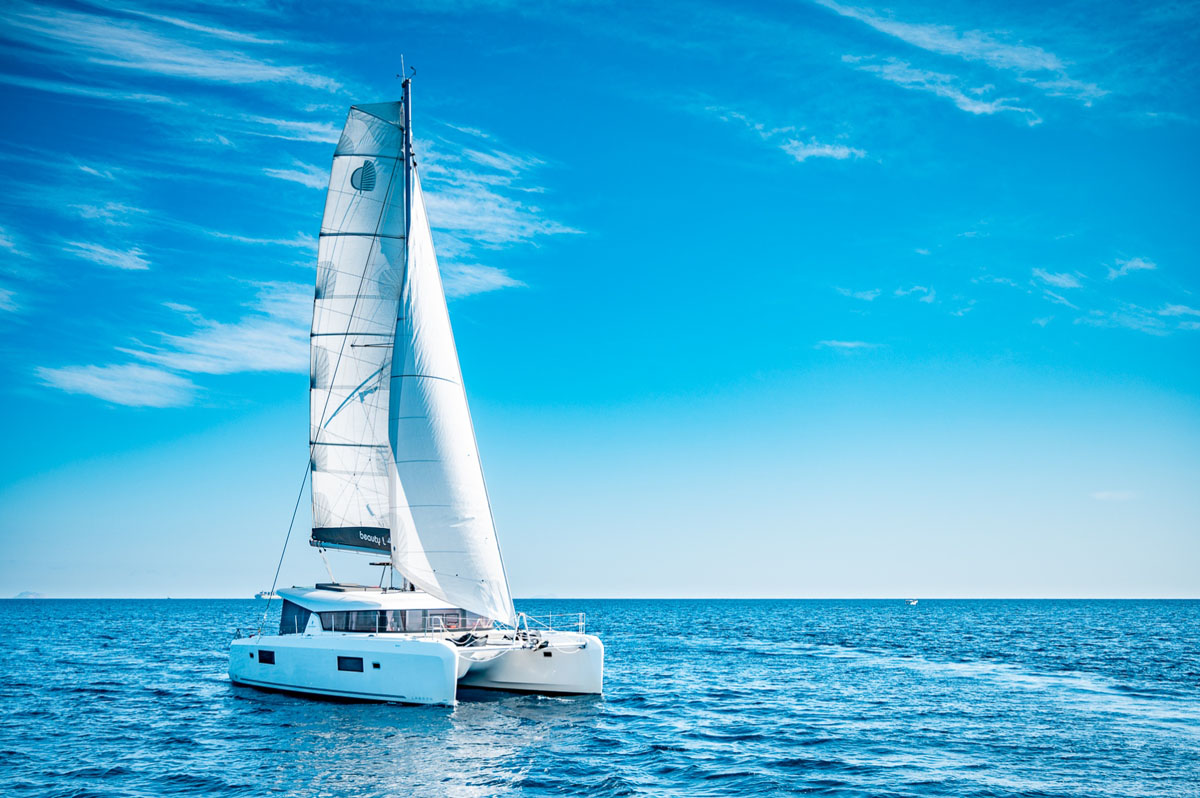
How to handle sails on a catamaran
Another important aspect of catamarans is sail handling. If you rent a sailing catamaran, it’s natural to want to use it under sail. In this case, the choice of catamaran type is crucial for a safe and enjoyable experience. Catamarans with a flybridge have a very high boom, usually over 2.5 meters, to clear the bimini that covers the flybridge seating area. In these conditions, working with the mainsail can be difficult and potentially dangerous.
On the other hand, if you choose a catamaran with a mezzanine helm, the boom will be lower, making working with the mainsail much easier and safer. This allows you to handle the sails more comfortably and enjoy your sailing to the fullest.

Safety: can a catamaran capsize?
When it comes to sailing, less experienced sailors often wonder how safe a ballast-free boat like a catamaran is when sailing close-hauled. In other words, they ask: can a catamaran capsize? The answer is: capsizing a cruising catamaran like a Lagoon, Fountaine-Pajot, or Bali is very difficult, if not impossible. Other types of catamarans designed for different sailing conditions may carry more risk, but those boats are usually handled by highly experienced crews, and accidents are very rare. In fact, a monohull is generally more likely to capsize than a cruising catamaran.
Cruising catamarans are designed for people with limited experience, often sailing with family, for whom safety is essential. They have reduced sail plans and weight distributions that enhance stability.
Pressure on the windward hull and reefing
What can sometimes be intimidating on a cruising catamaran is the “depressurization” of the windward hull. When sailing close-hauled in fresh wind, if the boat is moving quickly, the windward hull may lift slightly out of the water, creating the sensation that the boat is rising. In reality, it’s just less pressure on the water from that hull. Before the boat could ever capsize, the hull would need to lift almost vertically. If necessary, the skipper or crew can ease the mainsail or headsail, and the boat will immediately level out.
Some boat builders provide guidance on handling strong winds, indicating at which wind speed reefing should be applied. Unlike monohulls, catamarans do not give strong physical feedback, so it can be hard to tell when it’s time to reduce sail.
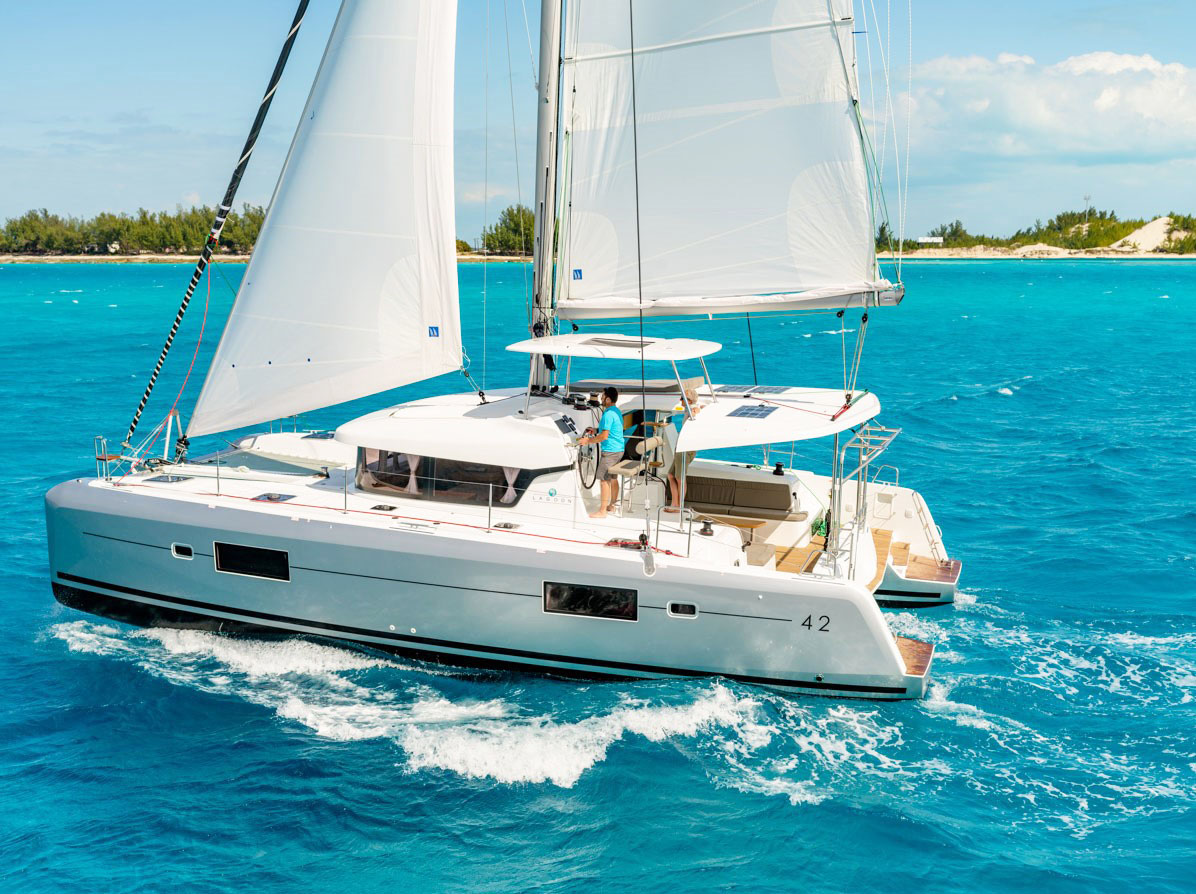
Cruising catamarans: close-hauled sailing and rough seas
A common question for newcomers is: how safe are these boats at sea? The answer is very reassuring: catamarans are extremely safe. During summer Mediterranean cruising, safety is almost guaranteed. Accidents involving catamarans are rare and usually result from inexperience or skipper error, mainly in ocean conditions.
In terms of comfort, catamarans can be less comfortable than monohulls in some situations. Specifically, they are not very favorable when sailing close-hauled in rough seas. The two hulls may rise on waves at different times, creating an uncomfortable “shaking” effect. However, this only affects comfort and does not compromise safety, which remains high. For a more comfortable sail, it’s advisable to depart early in the morning, before the wind picks up.
Conclusions
As we’ve seen, catamarans are safe boats that can be sailed even with limited experience. This doesn’t mean that normal precautions shouldn’t be observed, always adjusted to the sailor’s level of experience. With proper preparation and awareness, sailing a catamaran without a skipper can become an unforgettable and rewarding experience.
Discover the best boat rental deals
You May Also Like
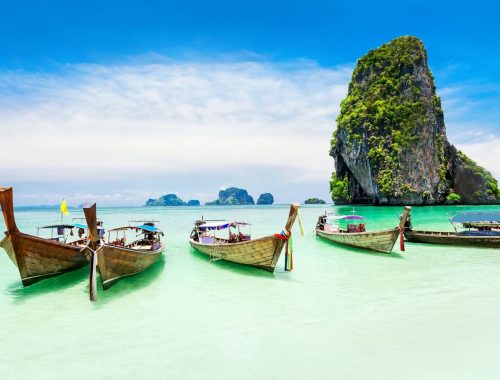
Sailing among the pristine and ‘mystical’ beaches of Thailand
15/12/2024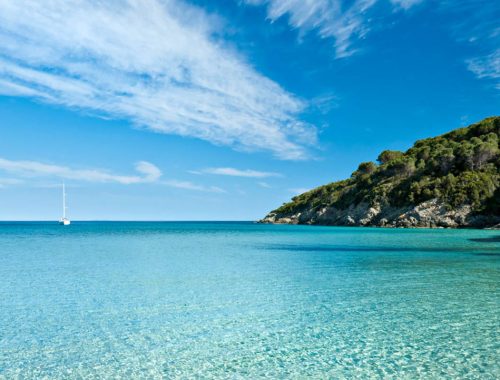
Sailing among the beauties of the Tuscan Archipelago
15/11/2021